Art Fairs
From New Faces to Hug Art, Here Are 5 Major Trends to Be Found in Art Basel’s New Online Fair Devoted to Work Made During Lockdown
Our market team scoured the digital aisles so you don't have to.
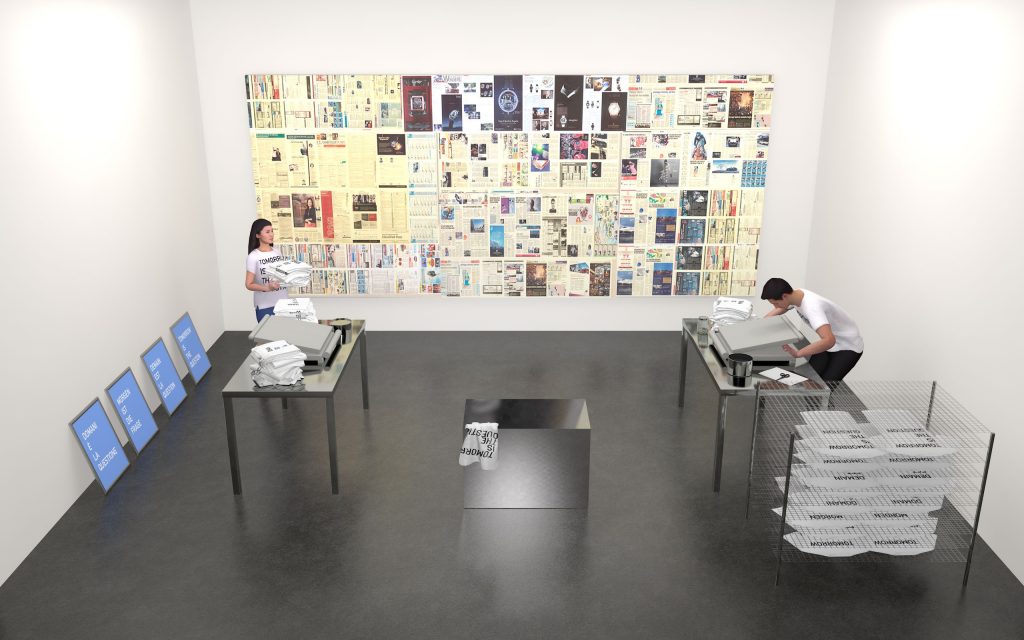
Our market team scoured the digital aisles so you don't have to.

Artnet News

To much of the art market’s dismay, major art fairs are still a long way off from bringing back the high-touch (in every sense of the term) in-person events that everyone is used to. But we have at least reached a milestone.
On Wednesday, Art Basel broke from tradition by launching a slimmed-down, concept-oriented digital presentation with no connection to its usual fair calendar. Called OVR:2020, the four-day online marketplace brings together 100 exhibitors—about one-third of the number that exhibit in Art Basel’s IRL shows—offering 600 artworks, all created during this seemingly never-ending year of tumult.
Notably, the virtual fair is also the first of Art Basel’s online efforts that requires exhibitors to pay to participate, with the fee being a flat CHF 5,000 ($5,500).
Given the premise, it’s not surprising that several of the works in OVR:2020 deal head-on with the various ruptures that have made 2020 so overwhelming: the struggle for racial justice, the vulnerability of liberal democracy, and—of course—the impossibility of simply taking an unfiltered breath in public without fearing for the worst.
Yet OVR:2020 contains multitudes beyond these topical themes, too. For instance, Rirkrit Tiravanija’s untitled 2020 (2020) takes the form of a live-streamed performance in which staff members at the neugerriemschneider gallery work in shifts to silkscreen T-shirts 24 hours a day for the entirety of the digital fair’s four-day duration.
To help guide buyers and curious viewers through the reams of JPGs on display, Artnet News’s three-headed market-reporting monster (Eileen Kinsella, Nate Freeman, and Tim Schneider) descended on the virtual aisles and emerged from its sortie with five major trends.
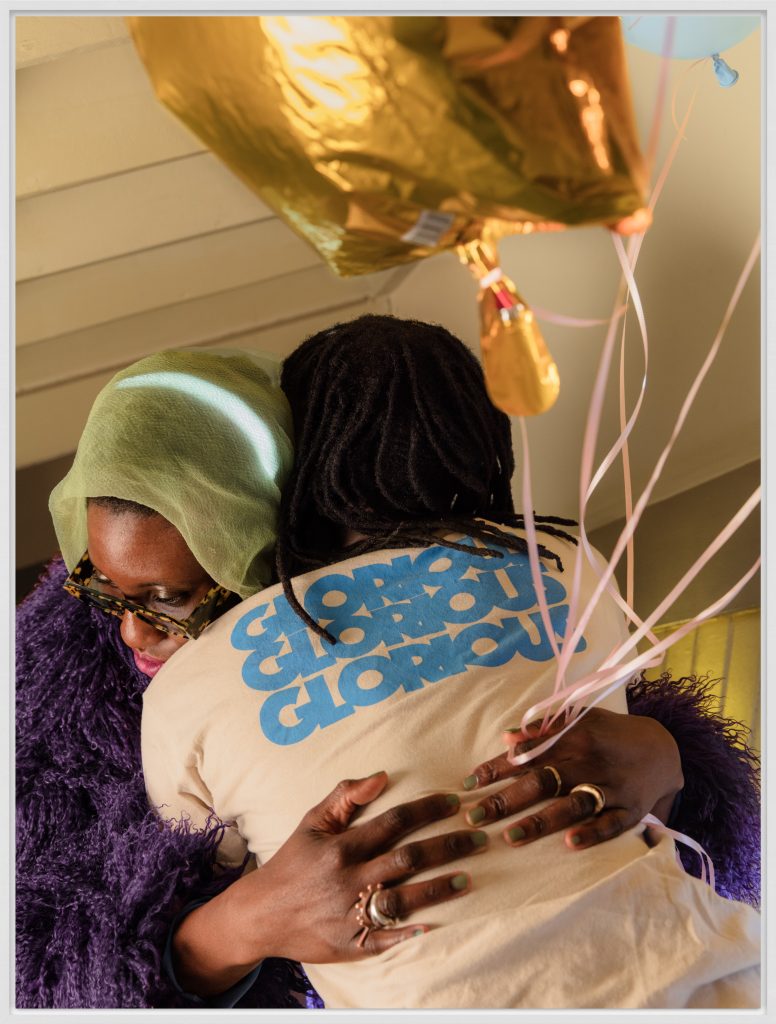
Elliott Jerome Brown Jr., Dish soap in the jacuzzi (2020). Courtesy of Nicelle Beauchene Gallery, New York.
While figurative painting and portrait photography began their market resurgence years ago, these two categories often take a subtly topical turn inside Art Basel’s latest set of virtual booths. Where artists have recently tended to default to studies of the human form in isolation, the works in OVR:2020 often celebrate, long for, or even question moments of physical communion between people—a poignant indicator of our need for touch and spiritual togetherness in troubled times.
The moments of bodily intimacy run the gamut of sentiments and media: at Nicelle Beauchene, Elliott Jerome Brown Jr.’s emotionally complex photographs range from a familial hug undercut by a distant sidelong stare, to the languid intimacy of a bathtub holding two entwined figures perhaps all too familiar with one another’s contours.
At Take Ninagawa, Taro Izumi’s video Cartilage Flag (2020) presents the surreal vision of actors playing Ronald McDonald and Colonel Sanders, pressed tightly together, each feeding the other his franchise’s signature fast food. And even a long-running blue-chip standby like Michelangelo Pistoletto’s mirror paintings embrace a new iteration (the “Messanudo,” or Laid Bare, series) about the full spectrum of humanity embracing one another—and bringing the viewer safely into the act.
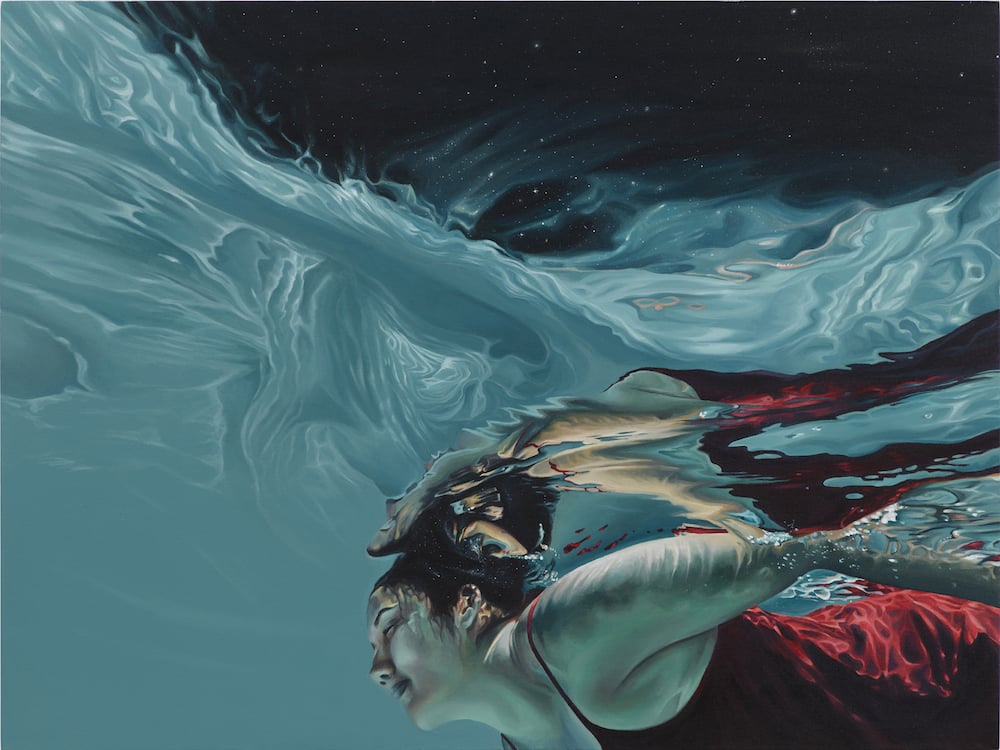
Calida Rawles, On The Sea Of Time (2020). Image courtesy the artist and Various Small Fires.
In a year when virtually no one has been able to travel and has instead spent far more time inside than usual (whether because of COVID-19-related fears, or the horrible air quality that accompanies disastrous and unprecedented wildfires), who hasn’t dreamt of some form of escape?
The theme recurs throughout the fair, including at the booth of Los Angeles gallery Various Small Fires, where a show titled “Dream State” is the result of inviting artists to imagine their ideal environments.
The show stems from author Shakti Gawain’s book Creative Visualization, in which he asks readers to meditate on images that correlate with their ideal scenarios. The six California artists whose works are presented explore personal utopian spaces—and clearly, the concept has resonated with collectors. Calida Rawles’s On The Sea of Time was listed as sold on the site after the first few hours of the event’s opening.
In a similar vein, at Berlin gallery Esther Schipper, artist Simon Fujiwara’s series, titled “A Year of Magic,” includes six new pieces that reflect on a year of chaos, economic hardship, and seismic social changes, all while spinning off into fairytales and fantasies.
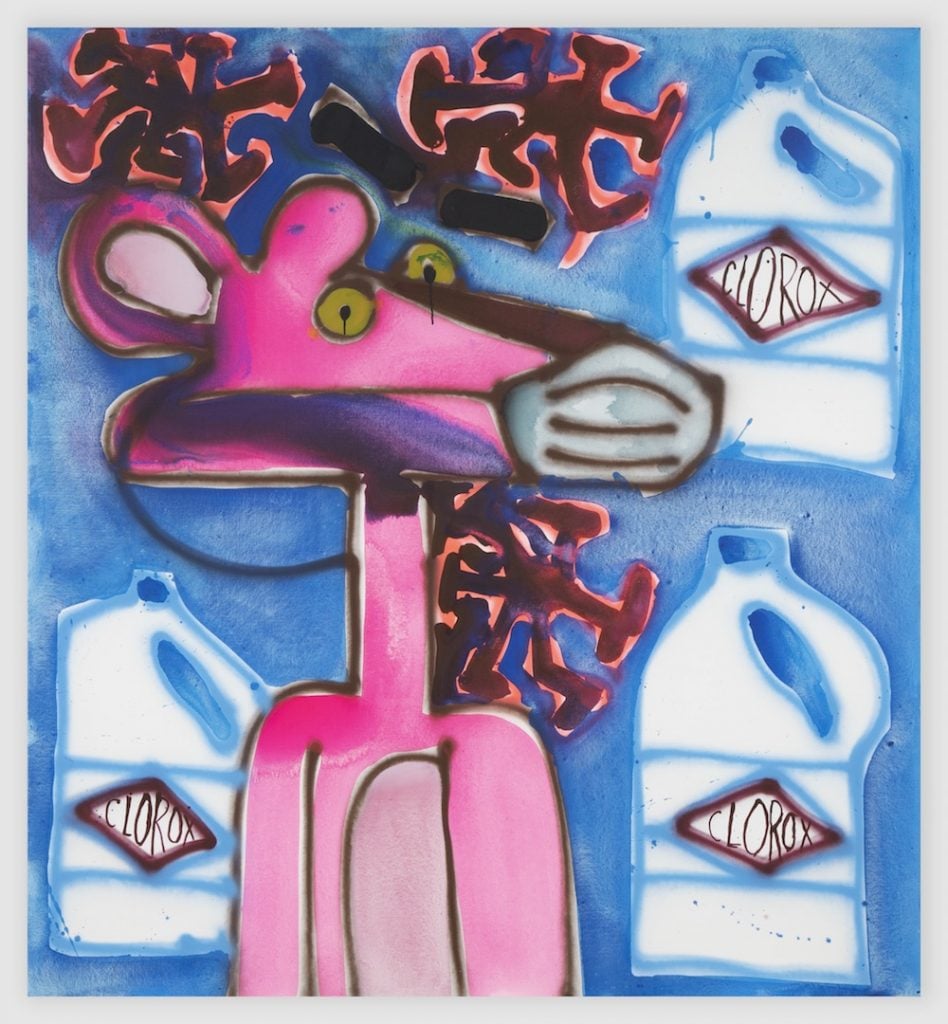
Katherine Bernhardt, Virus Summer (2020). Photo: Sarah Camody. Image courtesy the artist and Xavier Hufkens, Brussels.
Some artists reliably stick to their own unique methodology and aesthetic. But even those artists have been unable to ignore the unique challenges of the pandemic, climate change, and demands for radical change.
Katherine Bernhardt, whose eccentric style is on full display in a solo presentation through Xavier Hufkens, has put her ubiquitous Pink Panther character in the middle of the pandemic, surrounded by masks, Clorox bleach bottles (a nod to Trump’s ill-advised mention of bleach as a possible coronavirus antidote), and spiky spherical objects that reference the viruses.
According to the artist: “The paintings are about trying to relax at the beach but being overwhelmed with fears of COVID-19 and various other disasters of the summer.”
Well, they haven’t scared away collectors: by the end of the first day of the fair, all six works in the series sold at prices ranging from $60,000 to $90,000.
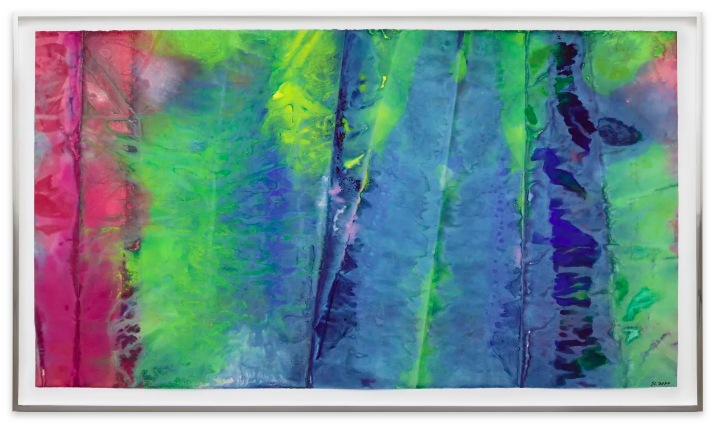
Sam Gilliam, Untitled (2020). Courtesy David Kordansky Gallery.
As the name suggests, OVR:2020 asked galleries to include in their booths only works made during this most turbulent year. And, like everyone else, artists spent a good chunk of 2020 sheltering in place, unable to commute with their studios—and, if they were in a city like New York or London, probably stuck in some shoebox of an apartment. The offerings in this themed viewing room reflect that claustrophobia. More than most other art fairs, this one has a predominance of drawings, as many artists had to downsize their output during lockdowns.
If fairs were still an in-person occasion, booth upon booth of small works on paper would be a bit anticlimactic for viewers, and cost-ineffective for dealers. Thankfully, that doesn’t really matter in an online setting, as plenty of these works on paper look just fine on a laptop.
Ebony G. Patterson is best known for immersive room-sized installations layered with sculptural elements, but for her presentation with Monique Meloche, she’s showing small paper collages made in her apartment in Chicago.
Meanwhile, as Sam Gilliam’s football-field-sized installation spent months in Dia:Beacon hidden from visitors, the artist was down in Washington, DC, exploring his relationship to watercolor on paper. The results, in the David Kordansky Gallery booth, gush Gilliam-ness even if they lack the artist’s typical physical presence.
And Nicolás Guagnini spent quarantine in his New York flat letting the mind wander obsessively over the physical presence of the virus. Eventually, he made a series of drawings of heads spitting and coughing, seen here at the Walden Gallery booth.
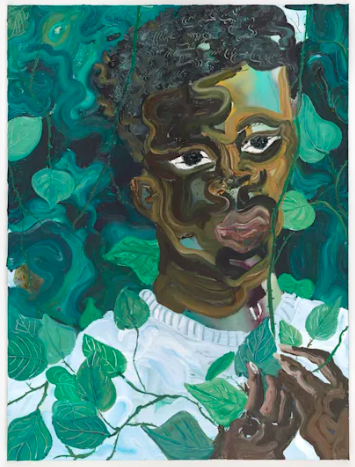
Ludovic Nkoth, Blood on the Leaves (2020). Courtesy François Ghebaly.
One thing that didn’t slow down during the pandemic months: galleries are still adding new artists to their rosters, hoping to not get left behind in the rat race to show the next hot young name.
Typically, these artists would get slotted into the show rotation. But with programming schedules backed up and out of whack after months of locked doors, many galleries can’t say for certain when they can give new roster additions debut shows. A good stopgap is to offer real estate in one of these online fairs, to start making the association between artist and gallery, and hopefully a few sales too.
Victoria Miro opted to use OVR:2020 to show off new works by Doron Langberg, whose color-washed renderings of lovers in discourse have turned him into a budding star. All the works were sold in the first days of the site going live. LA gallery François Ghebaly inaugurated the arrival of Ludovic Nkoth, the young Cameroonian artist currently completing a MFA at Hunter College, by uploading portraits of his family and friends. And days after Morán Morán announced that the young artist Tunji Adeniyi-Jones would join the gallery, a work appeared in the OVR:2020 booth alongside other gallery artists.